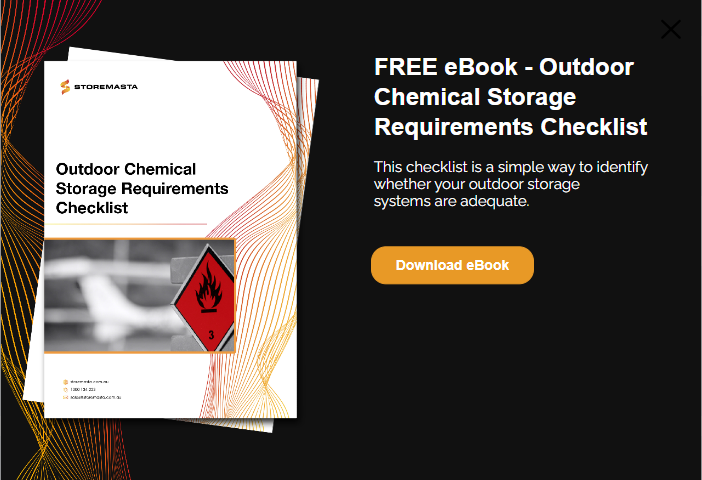Working with dangerous goods, such as flammable liquids or toxic substances, comes with certain risks. However, when you’re carrying larger volumes of these hazardous chemicals in bulk containers such as IBCs, there is even a greater risk of a hazard occurring. Uncontrolled chemical spills, hazardous vapour emissions and human harm can occur if large quantities of chemicals aren’t handled and stored in the correct way. To improve the safety of your operations, consideration must be given to the handling and storage practices of chemical IBCs. In this blog, we look at some of the most widely used classes of dangerous goods — and explain how you can implement handling and storage procedures to enhance the safety and efficiency of your operations.
What Are Chemical IBCs?
IBCs, or intermediate bulk containers, are found at workplaces and remote sites that require large volumes of hazardous liquids. IBCs were originally designed as an alternative chemical container to replace 200 L drums.
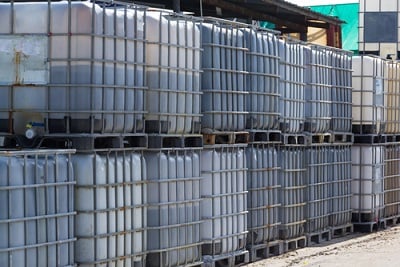
Chemical IBCs are transportable bulk containers that are used to store large quantities of hazardous liquids.
Due to the rectangular design of the IBC, this type of chemical container has a larger capacity than a drum. It’s also much easier to stack and transport due to its angular design.
Rigid IBCs are constructed from a hard, durable plastic and feature a metal outer cage that protects the plastic chemical container. They are often used across a range of operations including construction, manufacturing, mining and agriculture.
Some hazardous chemicals which are commonly stored in IBCs include:
- Class 3 Flammable Liquids
- Class 5.1 Oxidising Agents
- Class 5.2 Organic Peroxides
- Class 6 Toxic Substances
- Class 8 Corrosive Substances
IBCs can be used for bulk chemical storage, as well as a chemical container that allows for the pumping or decanting of chemicals on a jobsite. These bulk containers are often handled and stored in an outdoor environment, as the aggregate quantity is generally too great for indoor storage.
Compliant IBC Handling and Storage
When determining the handling and storage practices for any type of dangerous goods, there are specific requirements that you must follow to achieve safety and compliance with WHS Regulations.
The Australian Standards sets out detailed information to assist businesses with establishing and maintaining their dangerous goods handling and storage practices. Therefore, it’s best practice to refer to the relevant Standard when looking at your handling and storage practices.
Risk control measures offered by the Standards include requirements on chemical store construction, location, maintenance, handling practices, housekeeping and PPE.
However, to understand how these measures can improve the safety of your operations, we should first explain the risks associated with bulk chemicals in the workplace.
Risks Associated With Bulk Chemicals
Each class of dangerous goods poses its own unique set of risks for the organisations that carry them. To determine the correct handling and storage practices, you should always refer to the Safety Data Sheet for each individual chemical product that you’re carrying.
There are some key risks associated with the use of hazardous liquids in the workplace. We’ll highlight some of these risks below by detailing the risks associated with each dangerous goods class:
Flammable Liquids
Class 3 liquids pose a range of risks including fire, explosion, asphyxiation and human harm. As one of the most volatile classes of dangerous goods, flammable liquids must be separated from ignition sources to avoid fire and explosion hazards. As the flammable vapours from the liquid can travel long distances, it’s important to manage the chemical vapours as well as the actual flammable liquid.
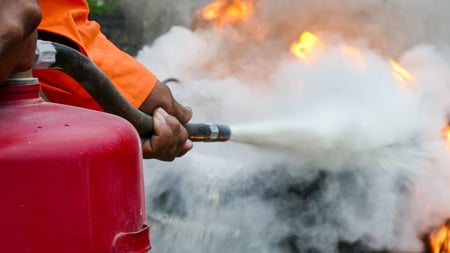
The hazardous vapours that are emitted from flammable liquids can ignite or explode in the presence of an ignition source.
Oxidising Agents
This division of dangerous goods is recognised as posing the risk of combustion, thereby causing harm to people, property and the environment. If the oxidising agent reacts with other substances or materials, redox (reduction-oxidation) will occur. This means that an oxidizing reaction can result in the emission of hazardous gases, excessive heat and ignition.
Organic Peroxides
Organic peroxides are thermally unstable substances which can combust independently. They are sensitive to high temperatures and can react with other substances. Organic peroxides pose a range of risks including fire, explosion and human harm.
Toxic Substances
The key risks associated with Class 6 substances include human harm and environmental contamination. If toxic substances come into contact with the human body, through inhalation, contact with the skin or eyes, or ingestion, it can cause acute health issues and even fatalities. Chemical leaks or spills that reach the natural environment can cause contamination of soil, waterways and the destruction of animal and plant life.
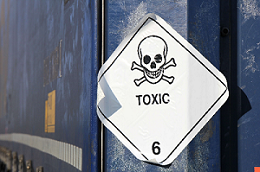
Toxic substance spills and leaks must be controlled to avoid instances of human harm and environmental contamination.
Corrosive Substances
This class of dangerous goods has a chemical composition that can destroy living matter and many workplace materials, such as metal. Corrosion of property, vehicles and storage facilities may occur if corrosive substances aren’t handled and stored in a compliant manner.
Handling Practices For IBCs
All dangerous goods (regardless of quantity) must be handled and stored in a manner that is compliant and safe. However, when it comes to bulk chemical containers, such as IBCs, the risks increase due to the weight of the container and the volume of chemicals that it holds.
When organisations are using larger quantities of hazardous chemicals, the level of risk may increase simply due to the quantity of dangerous goods that is being used and stored onsite. Increased hazards could be the result of manual handling issues, difficulties with chemical transferal and decanting, an increased risk of chemical leaks and spills and higher concentrations of hazardous vapours.
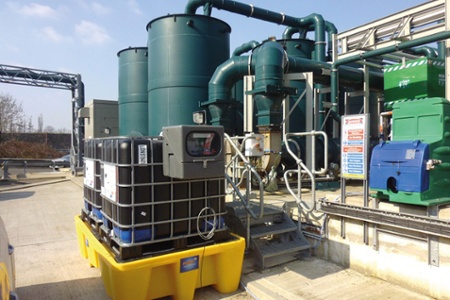
To ensure safe handling of IBCs, organisations should consider providing effective equipment for safe pumping, decanting and dispensing.
Considerations for the handling of chemicals in IBCs may include the provision of:
- Chemical handling equipment – engineering controls, such as handling equipment, should be implemented to prevent hazards and assist with manual tasks. Equipment should be used for all areas where IBCs are handled, from the time they arrive onsite to when the waste reaches the disposal area.
- Decanting equipment – when dealing with large quantities of hazardous chemicals, using the proper decanting equipment can improve safety and efficiency, by decreasing the risk of chemical spills.
- Bunding and secondary containment – compliant bunding and secondary containment systems are crucial for the management of chemical spills from IBCs.
- PPE – if PPE is required for the handling of your dangerous goods, staff should be well-trained in how to choose, put on and take off their PPE. A dedicated storage cabinet should be provided, to encourage staff to follow the correct PPE procedures.
- Maintenance of equipment – any equipment used to transport IBCs, such as forklifts or vehicles, should be regularly serviced and maintained to ensure a smooth transfer.
- Training and supervision of staff – any staff member, including contractors, who works in the handling and storage areas should be trained and supervised to ensure the correct work practices are being actioned.
- Housekeeping of handling areas – risks associated with handling large quantities of chemicals can include high concentrations of hazardous vapours and chemical spills. By implementing strict housekeeping procedures, any hazards can be immediately addressed and rectified by staff.
Storage Practices For IBCs
Larger quantities of hazardous liquids are generally subject to additional requirements as per the relevant Australian Standard. The capacity of the chemical bund, the location of the store, separation from protected and public places, and the need for adequate ventilation are just some of the requirements which apply to IBCs and larger quantities of dangerous goods.
General Considerations For IBC Storage
To reduce the risks associated with the storage of dangerous goods, there are many risks control measures that you can implement for your chemical store.
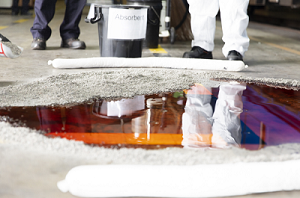
IBC storage that features compliant bunding and spill containment is essential for chemical risk reduction in the workplace.
Some general requirements for IBC stores may include:
- Non-combustible materials for construction
- Bund linings made from materials resistant to chemical attack
- Compliant bund capacity
- Liquid-tight spill containment sump
- Natural ventilation
- Secure storage for the outdoor location
- Dangerous goods and safety signage
- Provision for eyewash facilities and/or safety shower
IMPORTANT: When selecting IBC chemical storage containers, make sure that they have been designed and constructed in full conformance with the Australian Standards. If you choose a chemical container which does not comply with the Standards, you could be putting your organisation in breach of WHS Regulations.
Choosing IBC Chemical Storage
There are a range of considerations to make when selecting a chemical store for your IBCs. Factors that may influence your decision could be:
- DG Class - The Dangerous Goods class of your chemicals is the first consideration to make when selecting a compliant IBC store. This will dictate the risk control measures that are incorporated into the IBC storage container.
- Maximum Capacity - The quantity of chemicals that you’re using, now or in the near future, will influence the size of the IBC storage container. Often containers are most cost-effective the larger they are, so choose your capacity based on what you think your organisation will need in the next few years of operation.
- Work Practices – How your staff will be using the IBC store should be taken into consideration when purchasing an IBC container. If your staff will be transferring, pumping or decanting chemicals, you may wish to customise the container to suit your work practices.
The Location of IBC Stores
Selecting a compliant store for your IBCs is only the first step in achieving compliance. The location of your store is also influenced by the requirements of the Australian Standards.
Further considerations may include:
- Isolation from ignition sources
- Segregation from incompatible substances
- Separation from protected and public places
- Security measures for the outdoor site
Refer to the relevant Australian Standard to determine the compliant location of your IBC storage container.
IBC Chemical Storage
When carrying chemical IBCs in your organisation, it’s important to consider how you can reduce hazards in all handling and storage areas. One of the simplest ways you can achieve chemical compliance and reduce your risk is by installing an IBC storage container that’s been constructed to meet the requirements of the Australian Standards. You should also create a set of detailed procedures for chemical handling and storage, so your staff fully understand the potential hazards associated with bulk chemicals — and how they can actively reduce risk for your organisation.
To find out more about storing larger quantities of hazardous chemicals in the workplace, you can download our free checklist. This will help you determine your dangerous goods storage needs when your chemicals are stored in IBCs or bulk containers. Grab your checklist for free today by clicking on the image below.
Joining the team as a Dangerous Goods Storage Consultant, Melissa Hampton became Storemasta's Marketing Manager in late 2021. With extensive knowledge and experience in chemical compliance, Melissa is responsible for leading the Marketing team and helping shape their marketing strategy. In her spare time, you can find Melissa hiking, swimming and enjoying the great outdoors in beautiful north-west Tasmania.
/How%20to%20store%20hazardous%20chemicals%20legally%20and%20safely-703474-edited.jpg?width=450&name=How%20to%20store%20hazardous%20chemicals%20legally%20and%20safely-703474-edited.jpg)
